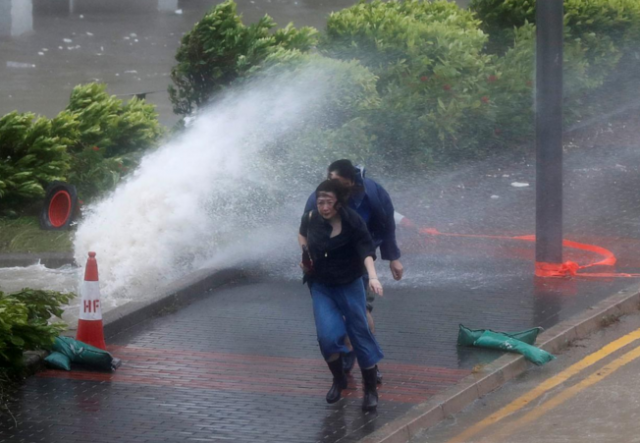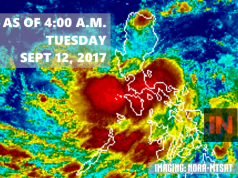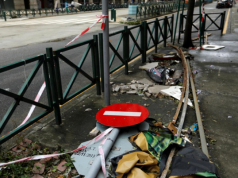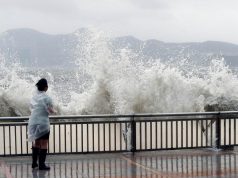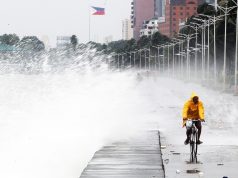HONG KONG – Hong Kong braced for Typhoon Hato, a maximum category 10 storm on Wednesday, with hundreds of flights canceled, trading in financial markets suspended and schools and most businesses in the Asian financial hub closed.
Streets were largely deserted as winds intensified and rain lashed down, with many skyscrapers in the heart of the financial center in darkness as the city battened down for one of the worst storms in years.
Hato churned up water in Hong Kong’s iconic Victoria Harbour and triggered large swells and massive waves on some of the city’s most popular beaches, with the weather observatory warning of serious flooding in low-lying areas.
Maximum winds near Hato’s center were recorded at a destructive 155 kmh (95 mph). Gusts in some residential areas were already causing damage, sending tarpaulins, roof screens and tree branches flying through the air.
A senior scientific officer for the Hong Kong observatory said sea levels could rise up to five meters (15 feet) in some places.
The weather observatory issued a signal 10 storm warning, its highest weather warning, and said Hato will be closest to the territory in the next few hours, skirting about 50 km (31 miles) to the south of Hong Kong, and warned of flash floods.
Winds intensified in the morning, with the maximum sustained winds recorded at Tate’s Cairn and Waglan Island at 77 kmh (48 mph) and 72 kmh (48 mph), with maximum gusts of 103 kmh (64 mph) and 86 kmh (53 mph) respectively.
Trading in Hong Kong’s financial markets was delayed on Wednesday morning, the stock exchange said. Trading will be suspended for the whole day if storm signal 8 or higher is in place at noon.
The city’s flagship carrier, Cathay Pacific, said the storm would “severely” impact flight operations, with the majority of flights to and from Hong Kong between 2200 GMT Tuesday and 0900 GMT Wednesday to be canceled.
Other transport services, including ferries to the gaming hub of Macau and outlying islands in Hong Kong, were suspended.
Financial markets, schools, businesses and non-essential government services close when the signal 8 or above is hoisted.
Typhoon Nida in August last year was the last storm to close the stock exchange for the whole day.

